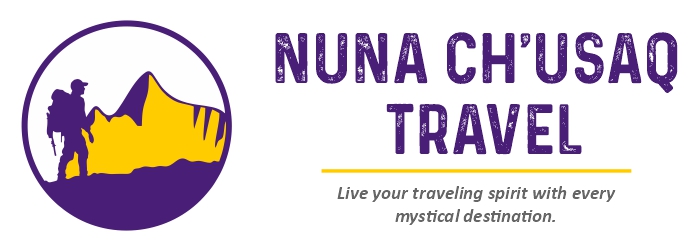1. Lima: Procession of the Señor de los Milagros (Lord of the Miracles)
In 1665, Lima, the capital of the viceroyalty of Peru, was shaken by a terrible earthquake, then, fear and despair seized the inhabitants of the city founded in 1535 by Francisco Pizarro.
Among the desolation generated by the tragedy, a rumor began to spread: in the area of Pachacamilla, a wall on which the Angolan slave Pedro Dalcón had painted an image of Christ crucified, remained miraculously standing.
The news would awaken the faith and curiosity of the afflicted people of Lima, who would begin to visit the Christ of Pachacamilla.These pilgrimages annoyed the authorities who ordered the destruction of the wall.
This order was never carried out due to a series of strange circumstances.The fame of the image was growing and was consolidated in 1687, when the wall resisted another violent earthquake.
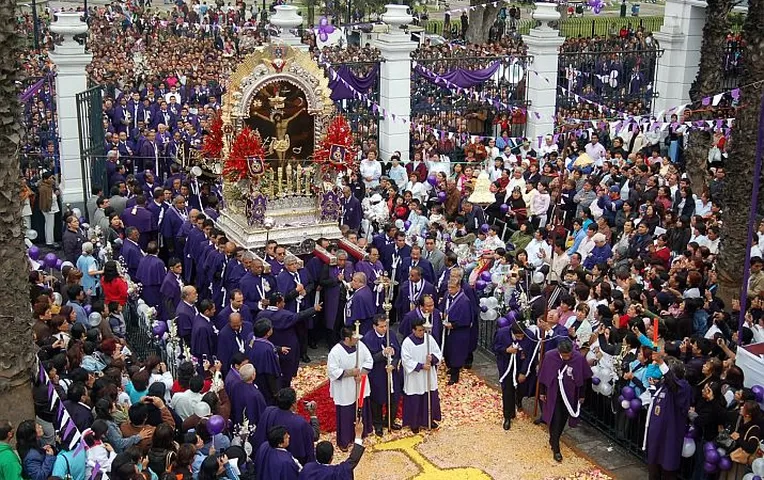
That was the origin of the devotion to the Señor de los Milagros or Cristo Moreno.Every year in October, its processional routes congregate hundreds of thousands of faithful in the streets of the Historic Center of Lima and other capital districts.
Being part of the “purple sea” (due to the color of the habits of its believers) that accompanies the patron saint of Lima, talking with the brothers and sisters who carry the processions or sing to the Lord, and tasting the traditional turrón de doña Peña, the typical sweet of the procession, is an experience that will move you.
If you are in Lima in October, take time to accompany the procession of the Lord of Miracles or visit the church and monastery of the Nazarenas, where the original image is located.
2. Cusco: Inti Raymi
The Inti Raymi or Festival of the Sun was held on June 21 in several scenarios of pre-Hispanic Cusco. The date coincided with the winter solstice, the shortest day and longest night in the southern hemisphere.
Full of mysticism and religiosity, the festival expressed the spiritual connection of Andean man with nature and especially with the Sun, which was worshipped and respected as the source of life and energy.
The Inti Raymi also had a political purpose. Its magnificence and level of organization showed the power of the Inca state before the eyes of its people and before the allied curacas (indigenous authorities) who were invited to Cusco.
But the Inti would stop shining in the Cusco sky with the arrival of the Spanish army. They would prohibit the Inca cults to impose the Catholic religion, so that the children of the sun would begin to believe in the God of their conquerors.

The Indians gradually assimilated Catholicism, but without forgetting their ancient gods such as the Pachamama, the stars, the Sun, among others. On June 24, 1940, the Inti Raymi would return to Cusco after almost 500 years of prohibition, as part of a process of revaluation of the roots and the pre-Hispanic past of Peru.
It was in this context that Andean historians and artists, such as Faustino Espinoza Navarro, would lay the foundations of the current Festival of the Sun.
Today, the greatest celebration of the Tawantinsuyo is much more than a tourist attraction.
It is memory, it is remembrance, it is pride for men and women who, beyond the passing of centuries, feel a special connection with the tayta Inti and Mother Earth.
3. Puno: Virgen de la Candelaria
With rain, sun or cold, thousands of Puno people pray, dance and make their musical instruments vibrate, to celebrate, thank and worship the Virgin of Candelaria, the mamacha (little mother) of the Peruvian Altiplano.
And it is these prayers, dances and musical melodies, which give a particular nuance to the Candelaria Festival, making it a real explosion of religiosity and revelry, identity and integration between Aymara, Quechua and mestizos.
If you want to enjoy a popular festival. If you want to see more than 100 native dances. If you want to dance to the rhythm of a troop of sikuris (groups of musicians who play zampoñas), don’t hesitate any longer: Puno is waiting for you in February.
We are sure that you will not regret feeling the energy and passion of a celebration inscribed in the Representative List of Intangible Cultural Heritage of Humanity of Unesco.
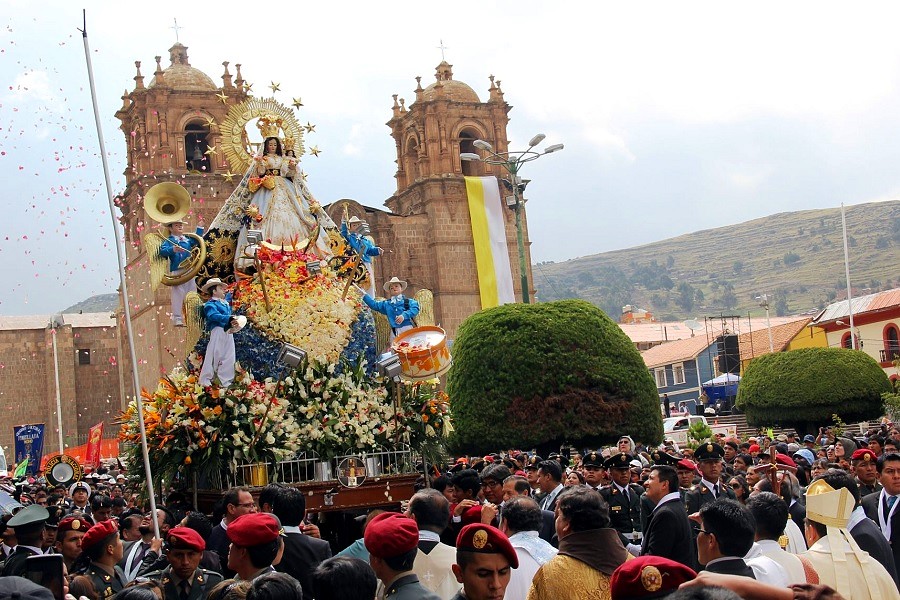
The image of the Virgin of Candelaria would arrive in Puno -from Cadiz or Seville- on February 2, 1583. A long time later, an inexplicable and saving event would occur that would turn her into the patron saint of the city.
What happened? In 1781 the rebel forces of Tupac Katari were ready to take the city. In desperation, the citizens of Puno sought divine help and took the image of the virgin in procession.
It was then that the inexplicable happened. The rebels mistook the passage of the believers for the martial march of a contingent of Spanish soldiers; then, they gave up their plans. That is the origin of a story that today is celebrated with processions, music and dance.
4. Ica: Grape Harvest Festival
Between March and April, the production of wines and piscos begins in Ica, with the pressing of grapes in the presses of the artisanal and industrial wineries of this city, located 304 kilometers south of Lima.
The viticultural history of the Ica valley dates back to the second half of the 16th century, when the Spaniards planted the first vines. Since then, the grape harvest has been a cause for celebration.
Nowadays, this celebration is lived and felt throughout the city. In Ica, cultural events, parades, contests, gastronomic fairs, among other recreational activities that attract national and foreign tourists are held.
Take advantage of your stay to taste pisco – Peru’s flagship drink – and the “trepadora” cachina, a “young” and sweet wine made from slightly fermented grape juice.
However, be cautious with pisco – it has between 38 and 48 degrees of alcohol – and with cachina, which, according to local connoisseurs, is treacherous because “it goes to your head without you realizing it”.
5. Trujillo: International Spring Festival
In a city that boasts a spring-like climate, the arrival of the season that precedes summer is a reason to rejoice. That is what happens in Trujillo, the beautiful capital of the Libertad region in northern Peru.
It was in 1950 that the idea of organizing a festival in honor of spring, at the end of September and beginning of October, was born. The initiative was proposed by Alberto Novoa, one of the members of the Lions Club of the Libertine capital.
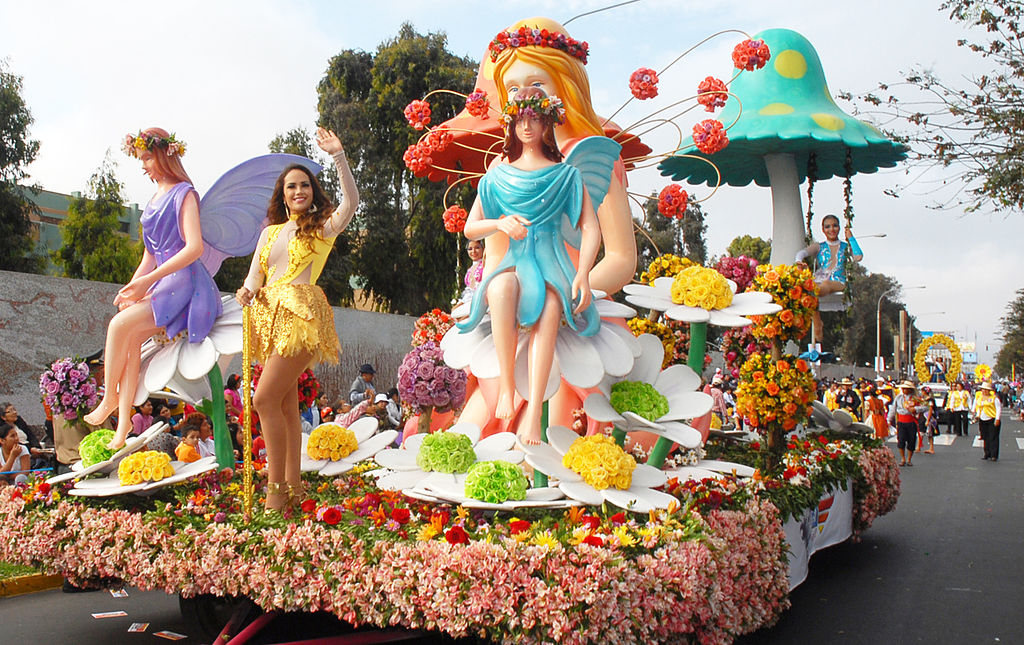
Since then, visitors to Trujillo during the festival have witnessed and participated in a series of artistic and cultural activities in which tradition and joy, music and dance, especially the marinera norteña, Peru’s national dance, take center stage.
But the highlight is the Gran Corso de la Primavera, a vibrant parade of floats, troupes, groups of folkloric dances and the eagerly awaited passing of the bastoneras who, with their smiles and rhythmic movements, win the affection of the attendees. Do you dare to be one of them?
6. Cajamarca: Live The Carnival
The Carnival of Cajamarca is the most joyful festival in Peru. True or false, they are convinced that the enthusiasm, the revelry and the showiness of their troupes and patrols, is incomparable, besides being highly “contagious”.
The reason: those who come to Cajamarca during the carnival (held in February or March) become fervent followers of the Ño Carnavalón, the main figure of the festival who used to live in the mountains, according to rumors heard in the city.
Represented as an anthropomorphic being, legend has it that the charismatic character came down from the mountains during carnival to encourage people to dance, sing and enjoy life, encouraging them to forget their problems and worries.
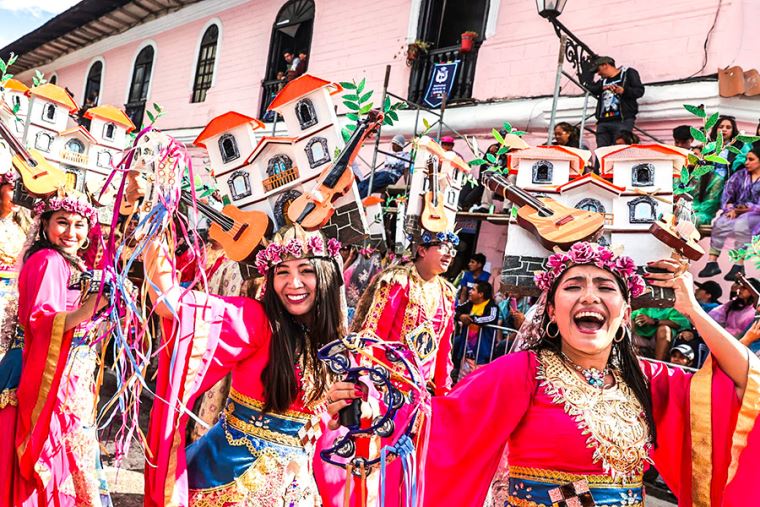
And that is what happens in Cajamarca -a region and city in the northern highlands of Peru- where the carnival furor is expressed in water balloon wars, paint baths, parades of troupes and patrols. Also in the spicy coplas, witty and ironic songs that are typical of the region.
During the most joyful festival of Peru, various activities take place, such as the entrance and burial of the Ño Carnavalón, the election of the Carnival Queen, the parade of troupes, among others that will convince you that the people of Cajamarca do not lie.
7. Amazon: San Juan Bautista
In the cities, towns and communities of the extensive, evocative and wonderful Peruvian jungle, on June 24 every year the feast of St. John is celebrated with great enthusiasm, in honor of the saint who baptized Jesus in the Jordan River.
And, as there are many rivers, waterfalls and lakes (lagoons) in the Amazon, the celebrants take advantage of the occasion to bathe, relax and purify themselves in its waters. This is one of the main traditions on St. John’s Day.
It is not the only one. The burning of bonfires and the “tumbamontes” or “yunzas” are common during the festival. This last custom consists of hanging gifts on a tree, for the devotees to “tumbamontes”. They wait their turn dancing in a round. Whoever knocks it down will be the organizer of the next yunza (feast).
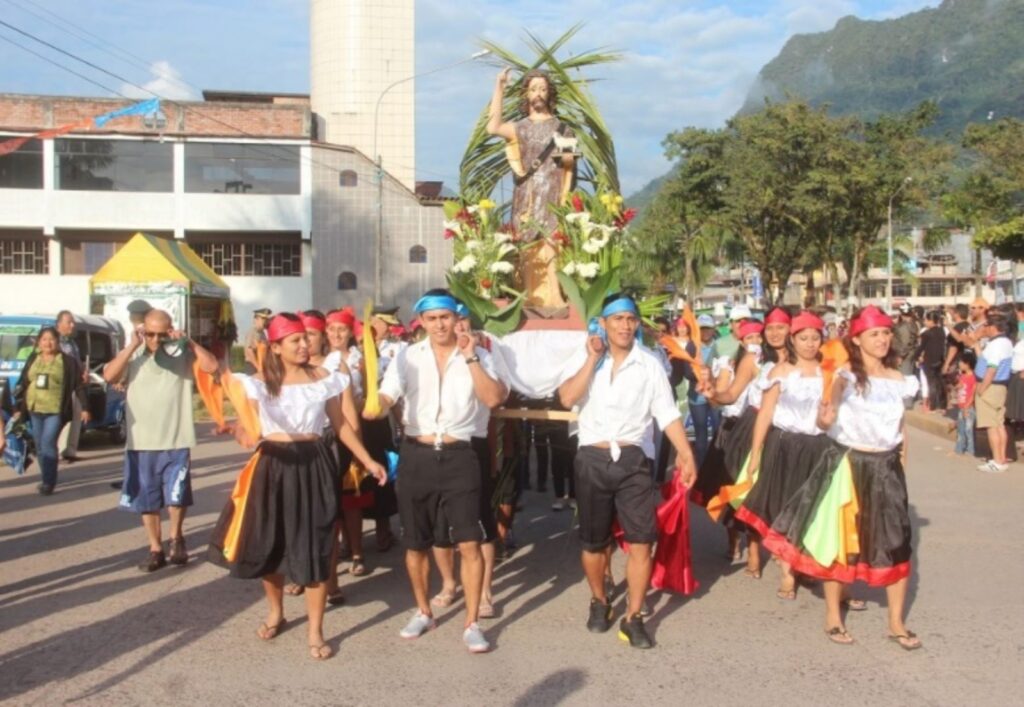
But the distinctive symbol is the delicious and hearty juanes. This classic of Amazonian gastronomy is prepared with rice and chicken, ingredients that are wrapped in bijao leaves (an Amazonian plant).
